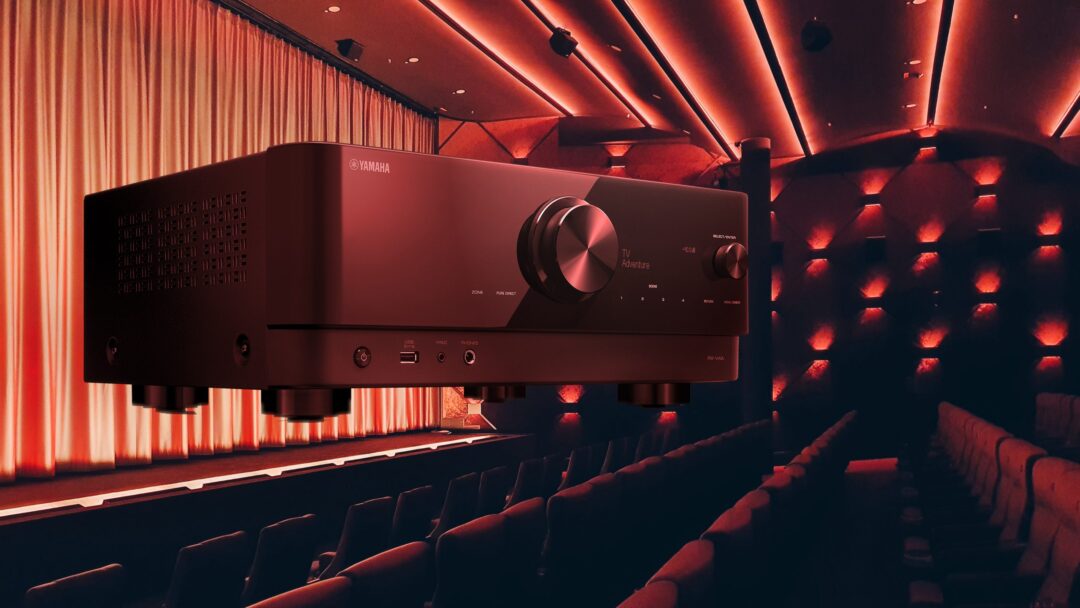Overheard at Yamaha’s development meeting:
– Guys, I have an idea. What if we make a surround receiver with only five channels, and remove almost all of the inputs?
– Hmm, that might be interesting. Is there anything else we can do?
– You know the 3D audio formats like Dolby Atmos and DTS: X? What makes the movie experience immersive? We’re dropping them!
– This is starting to look like something! Is there anything more we can remove?
How about removing the graphical interface on the on-screen menu, which we have otherwise been well known for? Replace it with a boring list form, as in the old telephone directory. And to bother the user a little extra: demand that the awkward on-screen menu must actually be used for every little setting. The display on the receiver itself is mostly for the sake of decoration.
– I’m almost sold. What more?
– We sell the receiver at the same price as the predecessors that had all the features.
– I love it!
You can almost wonder if this is how it went, when it was decided that Yamaha’s new and most affordable RX-V4A should see the light of day. For this is minimalist stuff. Even though Yamaha has given its new receivers a long-awaited new design, with round curves and few outer buttons.
Pure 5.1
The receiver is, as you will have realized, a pure 5.1 receiver. There are no height channels for Dolby Atmos or DTS: X, nor for rear surround speakers. Yamaha caters to customers who only want the most basic things, but who still do not think it holds with stereo sound.
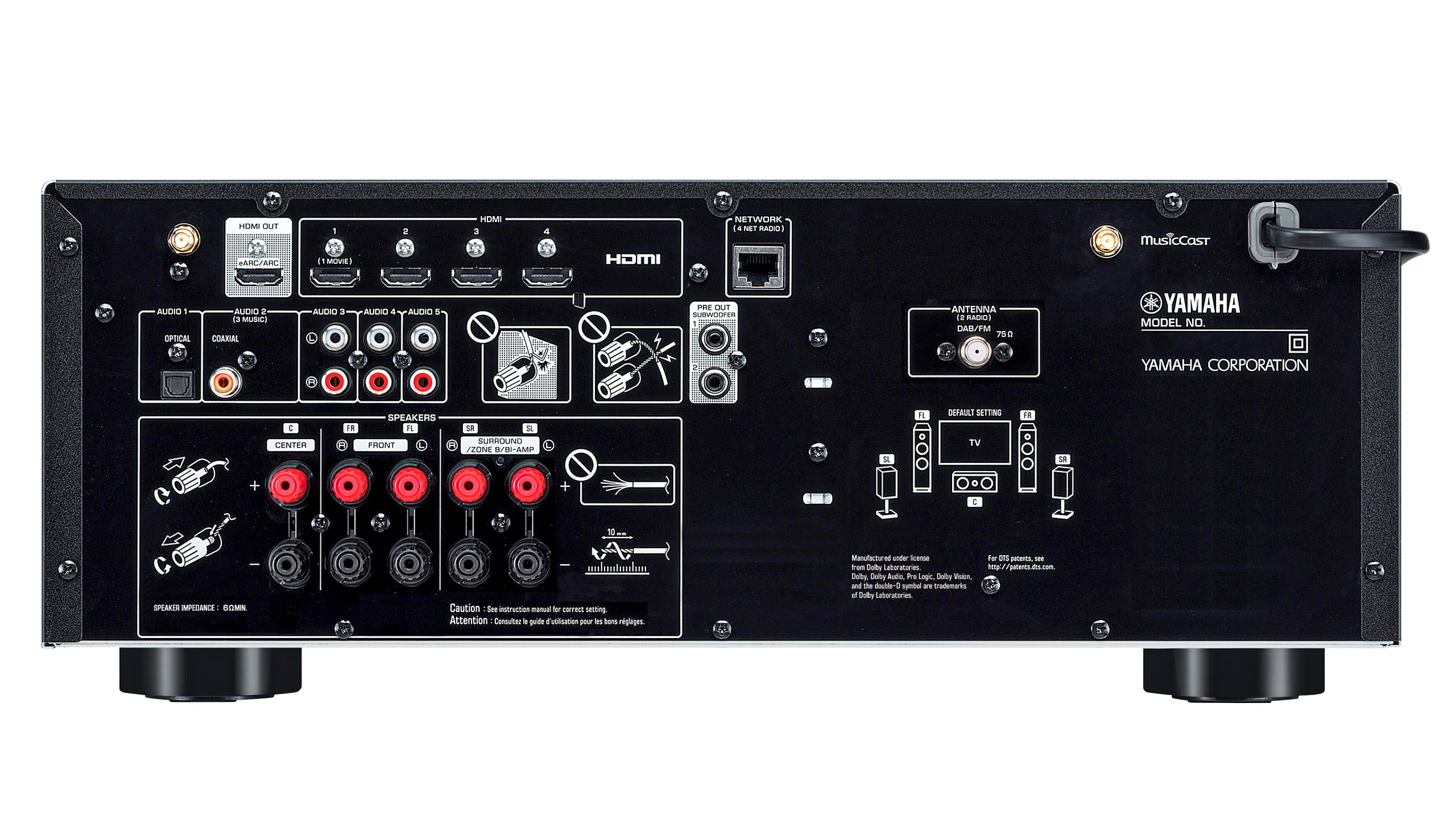
HDMI 2.1
HDMI inputs are scarce, although four should do for the vast majority. Especially considering that the HDMI output has audio return of the extended type (eARC), which also supports high-resolution audio back from the TV. This makes it easy to connect all sources to the TV, and then bring the audio back out to the receiver with a single HDMI cable. The HDMI circuits are of the type 2.1 and support resolutions with both 4K/120 Hz and 8K/60 Hz and all kinds of HDR formats, which means that you can play with the latest game consoles with the highest screen frequency, and also watch movies in 8K when the time comes is coming. The signals pass freely through the receiver, without any problem.
Boring on-screen menu
From Yamaha, I am used to on-screen menus with elegant graphics and a good overview, so I can easily find the functions I need to make settings. With the RX-V4A, the graphical interface has been replaced with white font in list form on a black screen. This makes setup boring, and also not very clear. There is one menu for settings, and another for functions. It is not always easy to know what is what, so you can quickly end up in the wrong menu. This is not a sin that Yamaha is not alone in, but the menus are so similar that I sit and skim down a lot of the menu before I see that it is wrong.
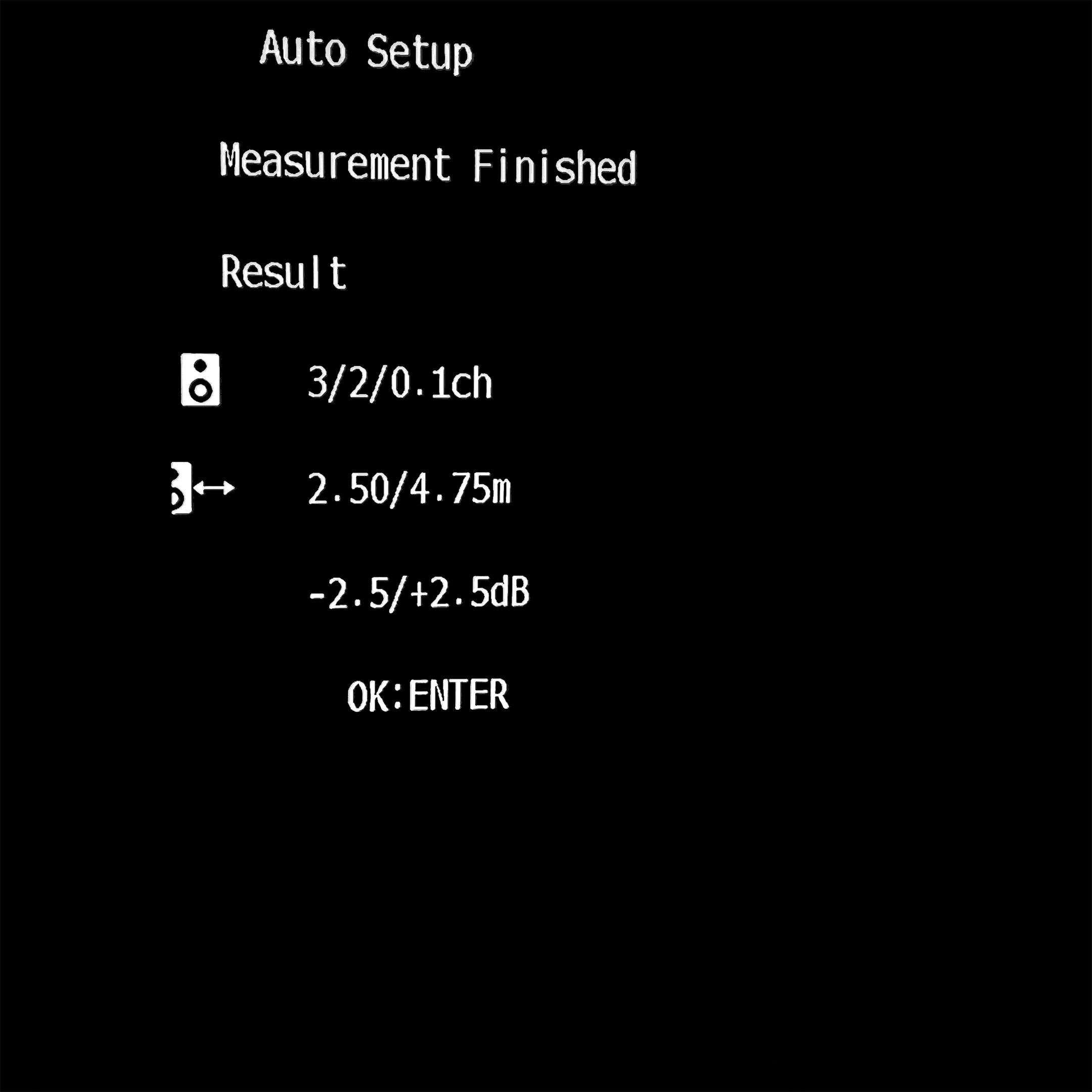
In daily use I like to be able to use the display in front of the receiver instead of the on-screen menu, when I do something. In this way you can make simple settings without turning on the TV screen at all. But with the RX-V4A, no such info comes up in the display, so you always have to turn on the screen. If the screen is a projector, this is extra cumbersome as it takes a long time to turn it on.
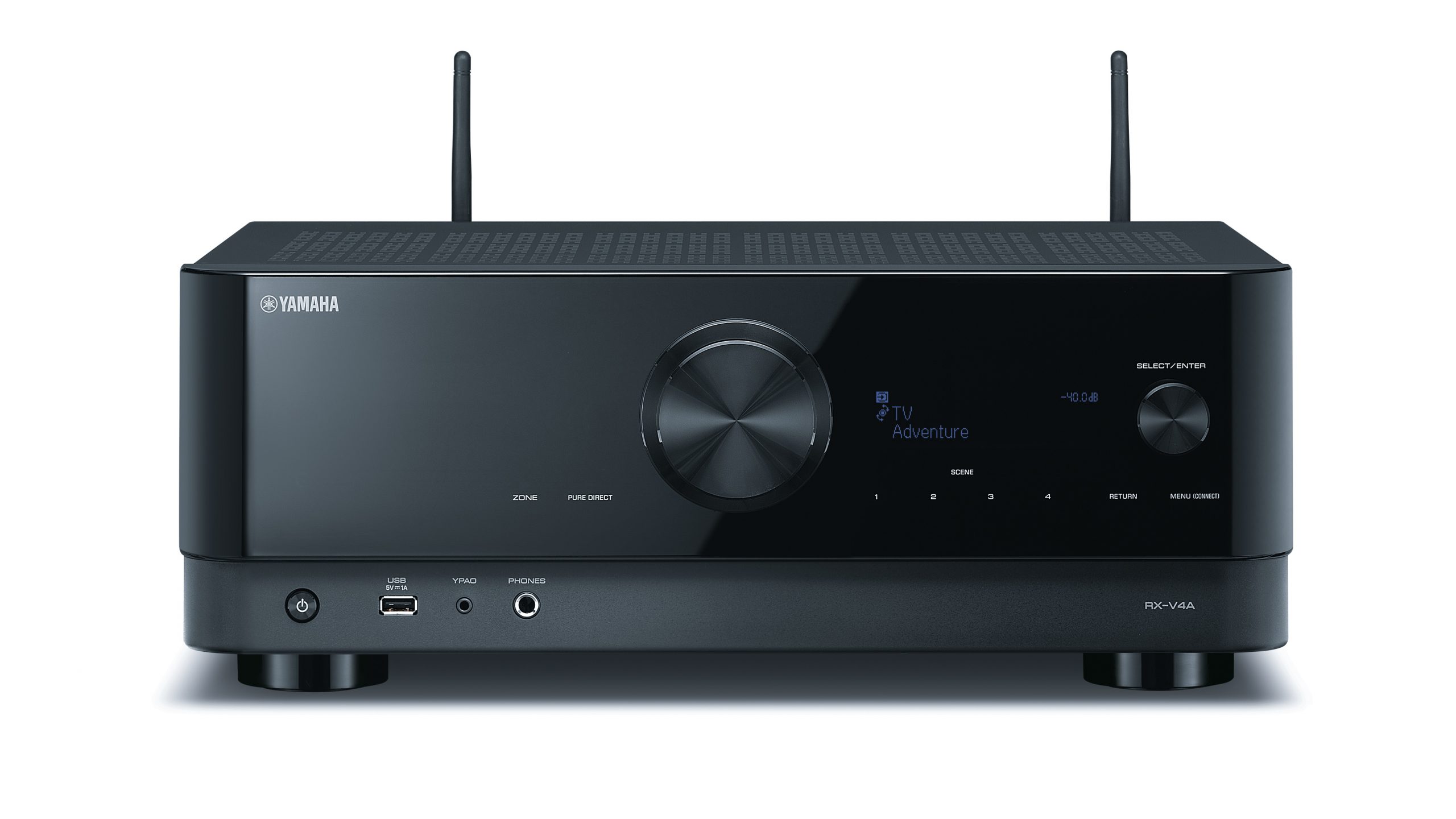
Automatic speaker setup
Automatic speaker setup is easy. You just set up the speakers, place the microphone at ear level on the middle seat, and press Start. This is a one-step operation, since the Yamaha receiver only calibrates the sound for one seat. Other receivers ask you to make the same measurements several times, with the microphone placed in different places. So that the calibration system is as familiar as possible with the acoustics in the room. But it’s okay, it works.
When the setup is complete, there is something on the screen about what my speaker setup looks like. Here the information is so sparse that it tells me very little. Speakers: 3/2 / 0.1, ie three front, two rear and a subwoofer. Ok.
Distances: 2.50/4.74m. So the speaker with the shortest distance is 2.50 meters from me, while the furthest away is 4.74m away. Which is what? I do not know.
I am also informed that level adjustment is done with from -2.5 dB to +2.5 dB.
There is so little information that it is essentially useless. Yamaha could just well have done away with them entirely. If I want to know more, I have to go back to the main menu, press Setup and find the manual settings. From here I can fine tune on my own.
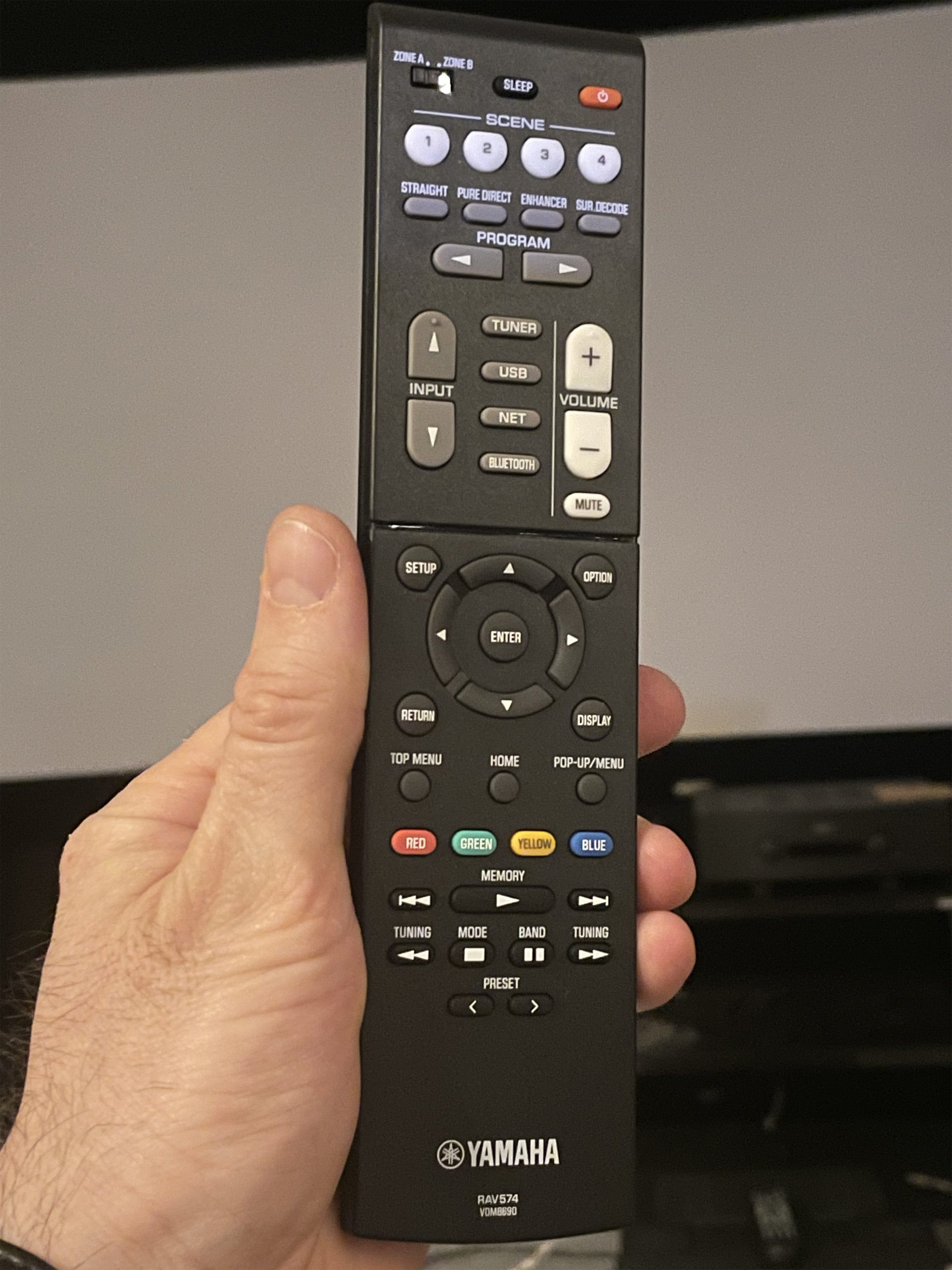
Good sound
Fortunately, the sound is good. Our Procella THX speakers respond well to the receiver, which reproduces the sound with good body and warmth, dialogues are clear and the sound on Batman: The Dark Knight on Blu-ray is much more massive and dynamic than through any soundbar I have heard. The 80 watts pr. channel in 6 ohms is enough for a decent-sized room.
5.1 sound done properly sounds much better and more engaging than any soundbar with seven, nine or eleven virtual channels. Both on film, but also music. And music in stereo is in a completely different league here.
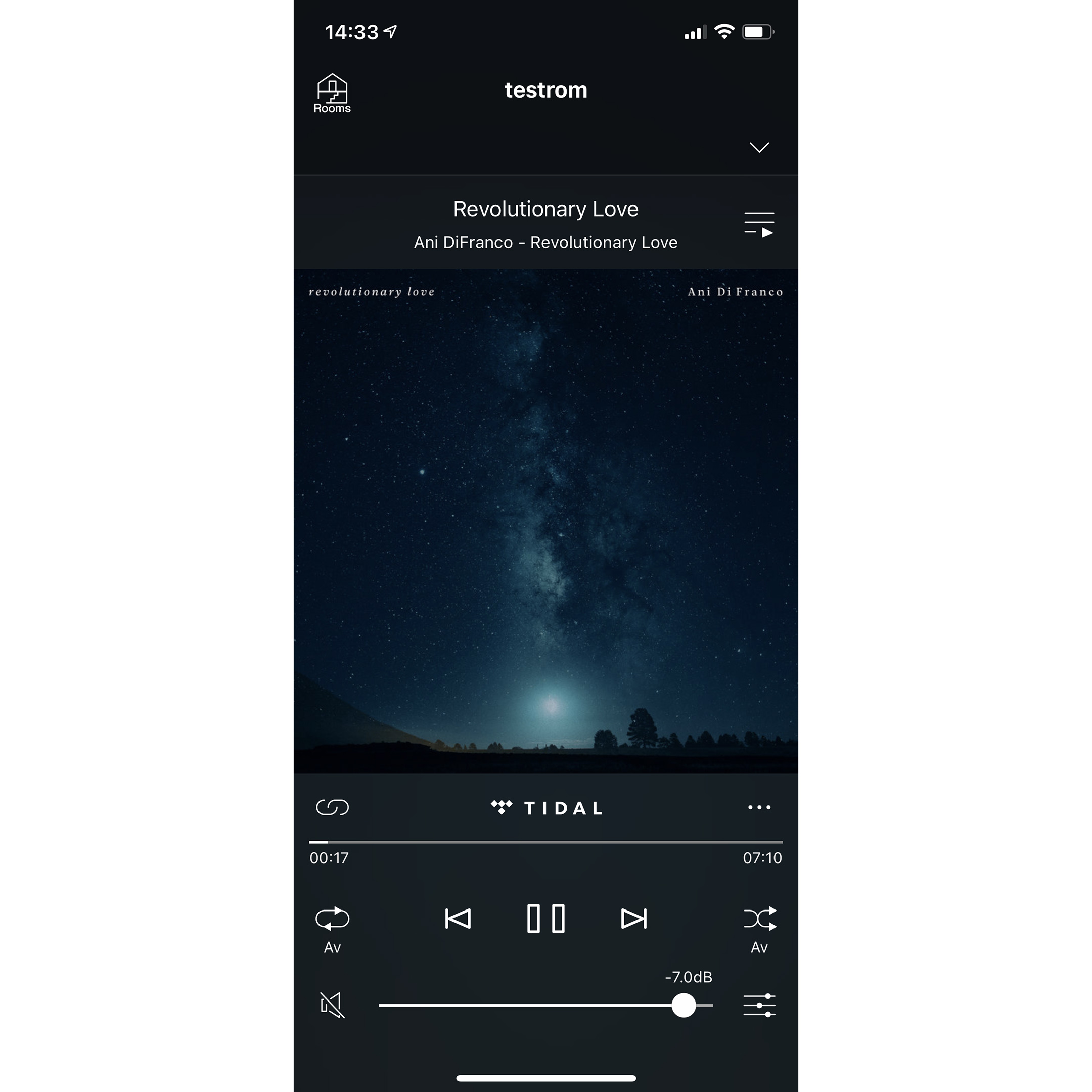
MusicCast
The RX-V4A sounds great on stereo music, I do not miss very much. Everything is included, and there is enough resolution that you can also play classical music and largely believe what you hear. I also like the interface of the MusicCast system, which is Yamaha’s way of streaming music. This is done from the MusicCast app, where you can create playlists across streaming services, and MusicCast supports many of them. Both Spotify, Tidal, Amazon Music and Deezer, to name a few.
The RX-V4A also manages to drive the large Dali Oberon 9 floor-standing speakers with conviction to a certain extent, although I would recommend something more powerful here. Either a better stereo amplifier or a more expensive home theater amplifier. When the receiver has to play the entire frequency range itself, without the help of a subwoofer in the bass, it gets a little tamer than I want. But it is no big deal.
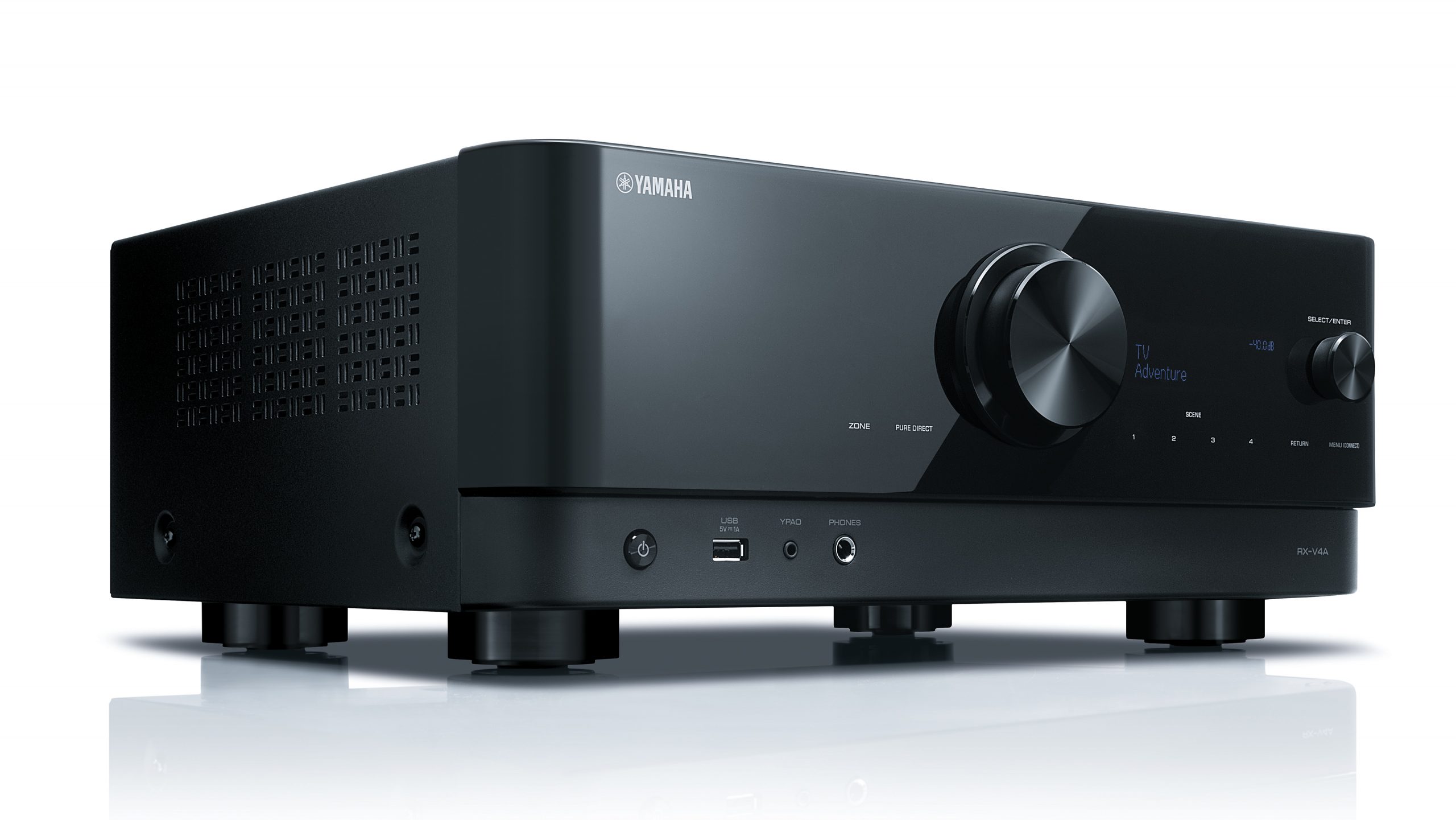
Who is it for?
Yamaha has obviously sought to make an affordable receiver for people who want surround sound, but who are not so concerned with “sound from above”, ie Dolby Atmos and DTS: X. This is a bit strange, because while most people are happy with a good soundbar, more avid home theater enthusiasts will demand something extra. This way, you can have proper rear speakers in the living room, but then more user-friendliness is required.
The Yamaha RX-V4A lacks the features that enthusiasts demand. But the general usability is complicated and seems to be aimed precisely at enthusiasts. Or at least aimed away from the beginners.
Competitors
In the desire to bring down the price without going at the expense of sound quality, they have thrown a little too much overboard. Does the Yamaha RX-V4A sound better than the sleek Marantz NR1711? Yes, maybe a little. But the Marantz catches up with more channels, and with Dolby Atmos it has a more immersive sound. The Marantz receiver is also much more interior-friendly, with its sleek cabinet. Designed to stand in a living room, where the Yamaha looks more like it’s meant for a dark room. Tell me you built a separate movie theater, but do not want Dolby Atmos. Yeah, right.
Marantz also has a much better graphical interface, and can calibrate the sound for up to eight places in the room – and even save the settings in two memories. So you can switch between different stereo and surround layouts, for example. Marantz costs 2,500 kroner more, but is well worth it. The discontinued Yamaha RX-V585 with both Dolby Atmos, DTS: X and more powerful amplifier is also a much better buy than the RX-V4A.
In the name of justice, there is the Yamaha RX-V6A for those who want more home theater sound, including Dolby Atmos and DTS: X. It costs only £200 more than the RX-V4A, ie about the same as the mentioned Marantz receiver, and with more power it will give an even better sound experience.
One problem I have with the RX-V4A is that this is not a cheap receiver. At this price, I expect at least seven channels, it will after all outcompete the soundbars. I therefore feel the time has past for pure 5.1 receivers, at leat if they are not £300 super-cheap.
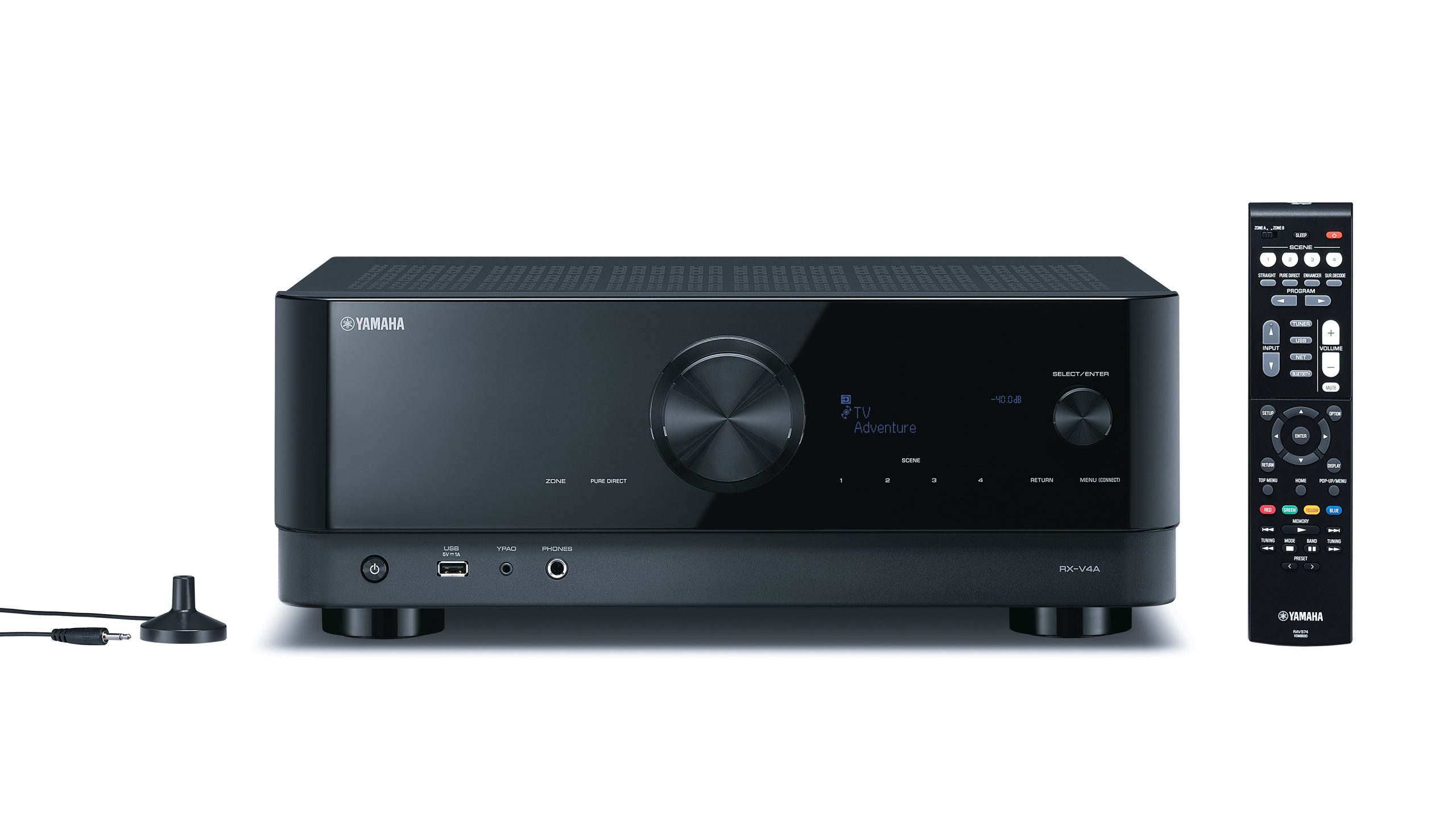
Yamaha RX-V4A: Conclusion
Yamaha RX-V4A is a pure 5.1 receiver, without support for either Dolby Atmos or DTS: X. That excludes home theater enthusiasts. The graphic-less, boring and not very user-friendly on-screen menu will quickly scare away “those who just want a little good sound in the living room”. Yamaha was long known for its graphical interface, so what happened here?
The sound is good enough, but never magical. The price is higher than previous entry-level models, and the RX-V4A appears to be too expensive to be a serious alternative in its class.
If the point of affordable receivers is to take market share from the soundbars, then the RX-V4A is unlikely to succeed. Then we have much more threat on big brother RX-V6A, which has the channels little brother is missing.
Plus in the book for the power features through MusicCast, but Yamaha has several stereo amplifiers that do the same job better. Like R-N602.

We think
Good balance in the sound image, nice sound on music in stereo. Updated HDMI features, and good interface for music streaming. Graphics-free on-screen menus. 5.1 sound does not hold up in today's home theater market.
500 €
Specifications
- Power: 5 x 80 W (6 ohms, 2 channels)
- Number of processor channels: 5.1
- HDMI: 4 in (4K/120Hz, 8K/60Hz), 1 out (eARC)
- Audio formats: Dolby TrueHD, Dolby Digital Plus, DTS-HD MApcm
- Room correction: YPAO
- Services:, AirPlay, Spotify Connect, Tidal, Deezer,, Amazon Music
- Wireless: MusicCast, AirPlay 2, Bluetooth
- Turntable input: No.
- App control: Yamaha AV Controller, MusicCast
- Voice control: Passive via Apple Siri, Google Assistant and Amazon Alexa
- Weight: 8.8 kg
- Colors: Black
- Web: europe.yamaha.com
